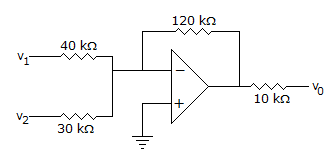Test: Analog Electronics - 7 - Electrical Engineering (EE) MCQ
25 Questions MCQ Test - Test: Analog Electronics - 7
It is desired to reduce distortion in a CE amplifier circuit. We should
In the circuit of figure β = 50 and VBE = 0.5 V. The quiescent value of base current IB is
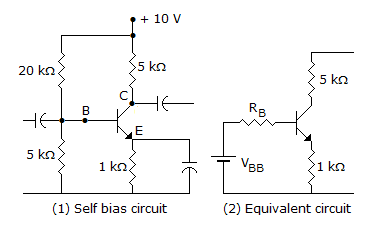

For a push pull circuit the most favoured biasing method is
In feedback amplifier the closed loop gain is nearly independent of open loop gain and depends only on the feedback factor.
In a N-P-N transistor, when emitter junction is forward biased and collector junction is reverse biased, the transistor will operate in
A feedback network to be used with an amplifier to provide oscillation is tested and found to give an output of 0.124 V with a 0.5 V input. What percentage negative feedback should be introduced to the amplifier so that linear oscillations result?
The advantage of Weinbridge oscillator over the phase shift oscillator is that oscillator the frequency may be varied over a range of
In figure the input and output Miller capacitances are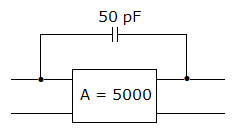
An inverting amplifier has R1 = 10 kΩ, and Rf = 150 kΩ then the O/P voltage, if input voltage Vi = 1 volt.
Figure uses 10 V zener diode. The minimum and maximum current through series resistance are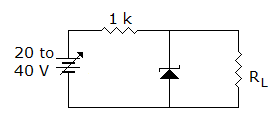
In a class C operation VCC = 40 V, RL = 50 Ω. The maximum load power can be
IF VCC = 15 V, VCEQ = 5 V and ICQ = 50 mA, the efficiency in class A operation is
A bridge rectifier circuit has a dc load current of 10 mA and a filter capacitance of 1000 μF. The peak to peak ripple voltage is
Which of the following best represents the bandwidth of an actual op-amp?
For an ideal noise free transistor amplifier the noise factor is
Voltage VL in the circuit when Vs < 0 where D is an ideal diode. (Take R1 = Rs = RL = 1 Ω)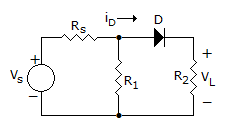
N-channel FETs are superior to p-channel FETs because
For the amplifier in figure, β = 800. The mid-band voltage gain V0/Vi is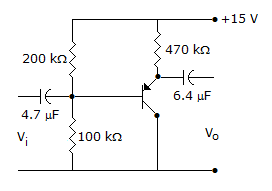
In a N-P-N transistor, when emitter junction is forward biased and collector junction is reverse biased the transistor will operate in



 = 10 mA.
= 10 mA. = 30 mA.
= 30 mA.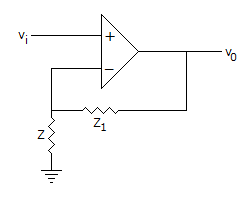
 .
.


